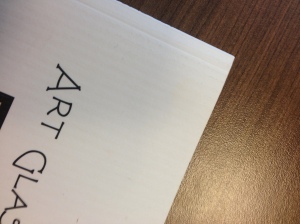Confused about paper? Here’s our second segment of terms for first-time authors; this time we define some common paper terms you’re sure to run into when you produce a book.
Basis weight: Basis or basic weight refers to the weight, in pounds, of a 500 sheets (ream) of paper cut to a given standard size for that particular paper grade. Common book text weights are 50#, 60#, 70#, and sometimes 80# text.
Caliper: The measurement of the thickness of the paper. This is listed on the online quote now.
Coated Papers: Paper that has been coated with clay and other substances for a smooth printing surface and improved ink holdout. Cast, gloss, dull and matte are four major categories.
Covers: For softcover books, we offer a few standard options for book covers, C1S in two weights, 10 and 12 point.
C1S and C2S– Acronyms for Coated One Side and Coated Two Sides paper stock, used for covers for softcover books. C1S refers to stock that is coated on one side. We offer a 10 pt (point) and 12 pt, with a 12 pt slightly heavier and more durable.
Caliper is the measurement of the thickness of the paper.
Digital Papers: papers designed and manufactured specifically for digital presses. They usually have a special coating that allows ink to adhere to the surface. If you specify a paper, be sure it is digitally compatible with the particular piece of digital equipment used – such as I-gen, HP, etc…
Natural – A term to describe papers that have a color similar to that of wood, also called cream, off-white or ivory.
Opacity: The translucency of the paper, that is, does ink show through to the other side of the sheet? The thicker the paper, the less likely it will show through.
Offset paper: Term used for uncoated paper generally used for books.
PPI (pounds per inch): The method used to calculate the spine thickness.
Text: The interior of the book, printed on a lighter weight paper. Text can also refer to a type of paper.
Uncoated paper: Paper that has not been coated with clay. Sometimes called offset papers.


